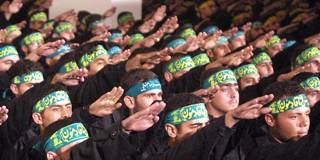To commemorate its founding 25 years ago, PS is republishing a selection of commentaries written since 1994. In this commentary from 2006, Mai Yamani notes that if the Middle East’s Sunni regimes decide that they need their own Hezbollah fighting for their cause, there are plenty of Al Qaeda-trained fighters available.
LONDON – Is the Sunni-Shia divide in the Middle East now deeper than the Arab-Israeli one? You might think so, given the response of some Arab governments to Hezbollah’s decision to attack Israel. Even as Israel dropped bombs on Beirut and Tyre, Saudi Arabia – perhaps the most conservative Arab-Muslim state – condemned the actions of the Shia Hezbollah in instigating conflict with Israel. Never before in the history of the Arab-Israeli conflict has a country that considers itself a leader of the Arab-Muslim peoples backed Israel so openly.

LONDON – Is the Sunni-Shia divide in the Middle East now deeper than the Arab-Israeli one? You might think so, given the response of some Arab governments to Hezbollah’s decision to attack Israel. Even as Israel dropped bombs on Beirut and Tyre, Saudi Arabia – perhaps the most conservative Arab-Muslim state – condemned the actions of the Shia Hezbollah in instigating conflict with Israel. Never before in the history of the Arab-Israeli conflict has a country that considers itself a leader of the Arab-Muslim peoples backed Israel so openly.